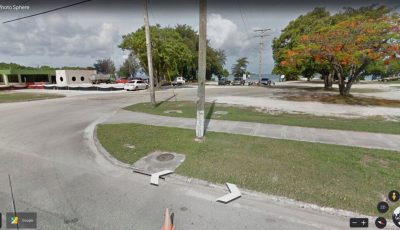DLNR slams ‘incomplete, flawed’ DEIS
The CNMI Department of Lands and Natural Resources and its Division of Fish and Wildlife made public yesterday their formal comments on the Department of Defense’s CNMI Joint Military Training Draft Environmental Impact Statement.
The 131-page response to the Department of Defense’s proposal to establish extensive live-fire training ranges on Tinian and Pagan islands describes a flawed and incomplete DEIS that fails to provide decision-makers with an accurate assessment of the widespread and egregious impact of the DOD’s proposals on the environment and the natural resources of the CNMI.
Loss of bird species
The proposed actions in the DEIS will prevent the recovery of a number of threatened or endangered species, including the Mariana fruit bat, Micronesian megapode, Nightingale reed-warbler, and Mariana common moorhen, as well as the Tinian monarch, a forest bird found only on Tinian, that the U.S. Fish and Wildlife Service recently announced may be added to the endangered species list.
In addition to threatened and endangered species, the DEIS must address impacts on Marianas endemic species (those found only in the Marianas) and special-status species including those protected under the Migratory Bird Treaty Act. But the DEIS does not assess impacts on special-status species on an individual basis. It only analyses impacts on three out of 39 MBTA bird species on Tinian and erroneously assumes that all species will be affected in the same way. It therefore fails to adequately consider the wide-range of impacts to the CNMI’s birds.
Impacts of disturbance of species populations were found to be repeatedly underestimated. The DEIS indicates that hundreds of acres of vegetation will be cleared, yet the impacts on native bird species are inaccurately deemed “less than significant.” The impacts of noise on wildlife are seriously underestimated. Also inadequately addressed are the significant negative impacts of the displacement of wildlife. The DEIS repeatedly claims that individual birds disturbed by activities will relocate to nearby areas. Yet there are no nearby unoccupied areas of suitable habitat that the birds can relocate to.
Missing and inadequate impacts assessments
DLNR found inadequate coverage of impacts throughout the DEIS. These include the impacts of invasive species introductions to the CNMI and between islands as a result of military transport of participants and materials; impacts to submerged lands; impacts to marine mammals; the impacts of wildfires on terrestrial and marine resources, especially on Pagan which is particularly vulnerable to wildfire; the impacts of amphibious assault vehicles and landing craft air cushion vehicles on turtles, turtle nesting habitats, marine mammals, corals, fish and marine invertebrates; and the effect of soil disturbance and contamination from explosive munitions on groundwater resources.
The three alternatives on Tinian and the two alternatives on Pagan presented by the DEIS feature only minimal differences from each other, limiting any real opportunities to actually avoid or minimize environmental impact.
The DEIS fails to state how many years the proposed activities can be expected to occur on Tinian and Pagan, and the time of year that the activities are to take place—both details crucial to an accurate assessment of environmental impacts. The analysis throughout the DEIS only considers the impacts of 20 weeks of live-fire per year on Tinian and 16 weeks per year on Pagan, while stating that 45 weeks of live-fire per year on Tinian and 40 weeks on Pagan are possible in the future. Although the difference in impacts of live-fire at these greater levels would be massive, the difference is ignored. In addition, the impacts of the pre- and post-training activities were not presented.
The DEIS states that analyses of impacts on humans was not completed for Pagan because the island is uninhabited. However, such impacts must be considered since Pagan is inhabited for most of the year and has a government-recognized resident population awaiting resettlement.
Left out of the DEIS altogether are the major impacts of relocating the International Broadcasting Bureau; construction activities in the Tinian and Pagan harbors; and unexploded ordnance and exploded munitions contaminants removal at the end of the lease period that will involve the complete removal of vegetation and soil from 935 acres of Range Complex A plus significant portions of Range Complexes B, C and D on Tinian, and 8,114 acres in the High Hazard Impact Area and the Live Fire Maneuver Area on Pagan.
Many DEIS impact assessments were found to be based on inaccurate, flawed or incomplete scientific data. Such data tended to support findings of “no significant impact.”
Lack of crucial mitigation details
DLNR noted that the DEIS repeatedly states that mitigation, minimization or avoidance measures “may” be created and implemented, and that these are not actual measures but are intentions to develop a plan. Yet throughout the DEIS there are numerous findings of “no significant impact” to plant and animal species based on these non-existent measures and plans. The DEIS cannot assert the results of implementation of plans that don’t yet exist and may not ever happen in its findings of “no significant impact.” It is not possible to assess the impacts of activities without knowing the details of mitigation, minimization or avoidance measures, nor can the impacts of the measures themselves be known and assessed.
Failure to consult with local agencies
The DOD failed to consult with CNMI natural resource management agencies regarding local terrestrial and marine resource issues. Not even DLNR, who conduct the vast majority of flora, wildlife and fisheries study and monitoring in the CNMI, were consulted, resulting in significant gaps in the DEIS.
DLNR resource managers and scientists noted that the DEIS applies a mainland approach and a lack of understanding of island systems in which space, habitats and numbers of wildlife are naturally limited, and where removal of habitat results in permanent losses to wildlife populations. Even small losses of habitat quickly pose critical problems for species that are already experiencing decline. As a result of this failure to recognize the unique biological circumstances of islands, the impacts of disturbance on wildlife are consistently underestimated in the DEIS.
Grave concerns
DLNR characterized the military’s intention to hold nearly one quarter of the CNMI land base under lease as excessive and unreasonable, and the restrictions on the people’s access to their own natural resources unacceptable. The loss of management control of so much of the CNMI’s natural resources would severely compromise the ability of the CNMI Department of Lands and Natural Resources (including the Divisions of Fish and Wildlife, Agriculture, and Forestry) to fulfil its mandate of managing natural resources for the benefit of the people of the CNMI.
It was also noted that the DEIS includes activities that are in violation of the Tinian Lease Agreement that does not allow the irreversible and irretrievable damage that destructive live-fire activities will do to the island’s natural resources.
Full DLNR CJMT Draft EIS/OEIS comments
The Department of Lands and Natural Resources’ full comments on the CJMT Draft EIS/OEIS are available on the Division of Fish and Wildlife website: http://www.cnmidfw.com//DLNR-CJMT-DEIS-Comments.php
Public comments on the Department of Defense’s CJMT Draft EIS will be accepted until Oct. 2 (CNMI date) at the following URL: http://www.cnmieis.org/submit-comments.html. Comments may also be emailed to: info@CNMIEIS.org (DLNR)



























